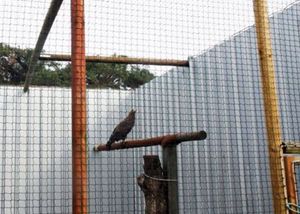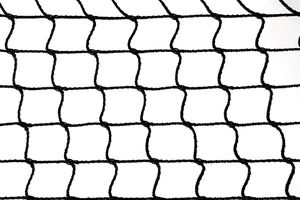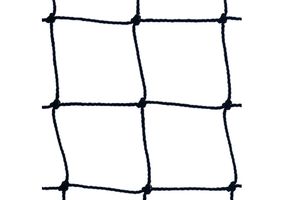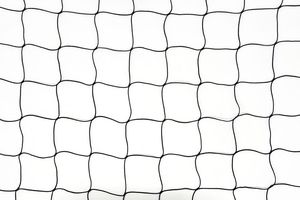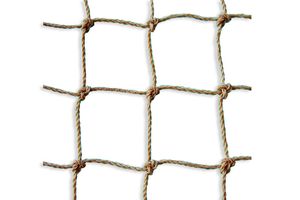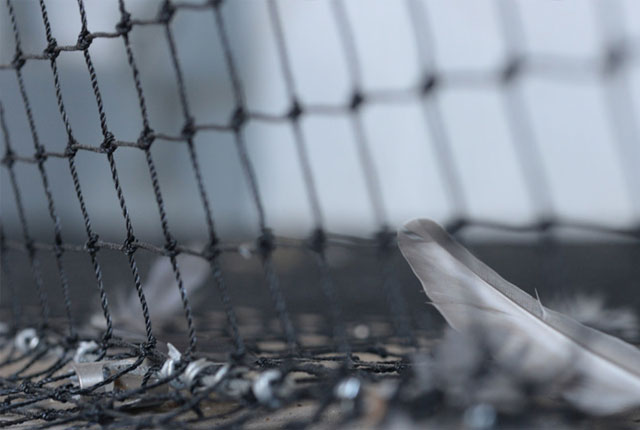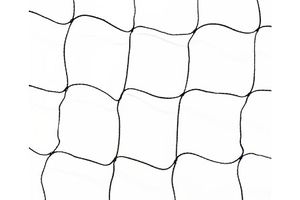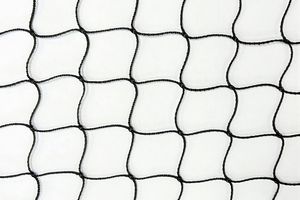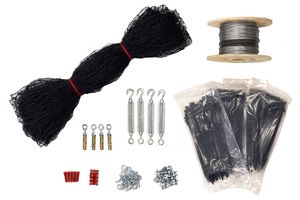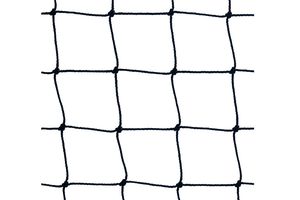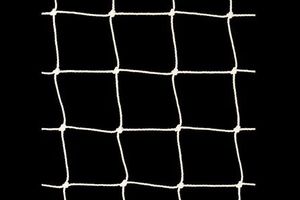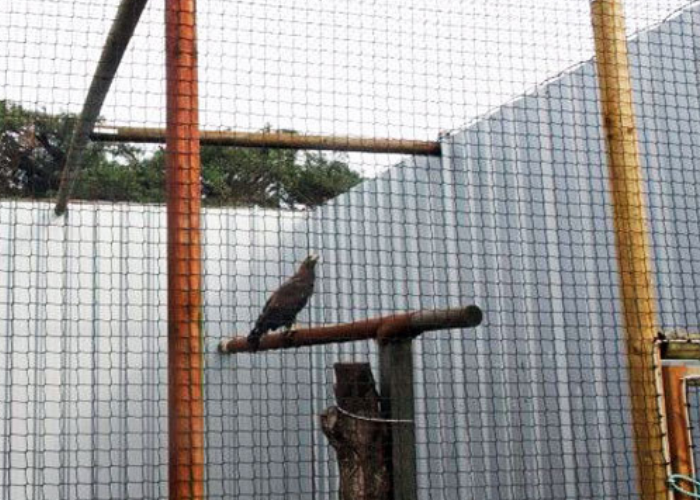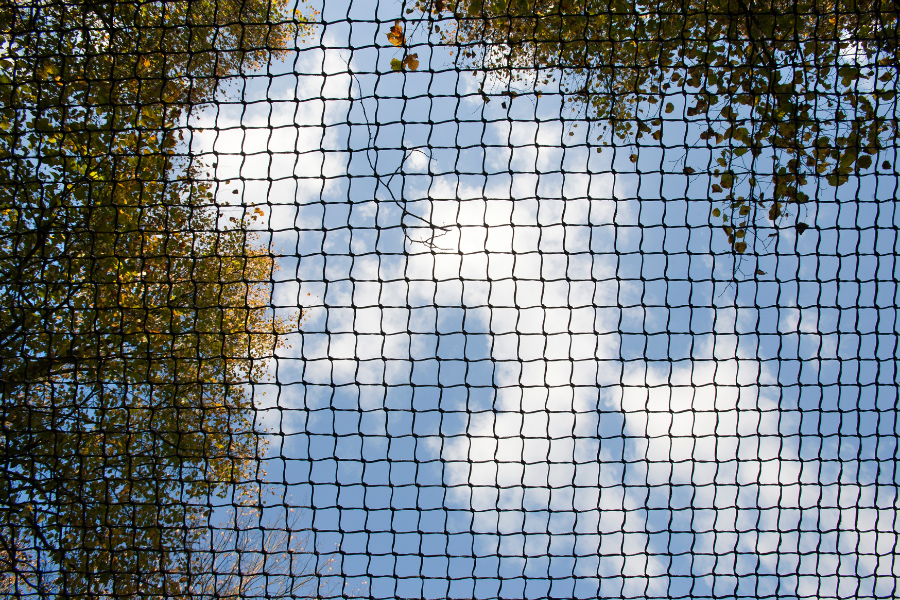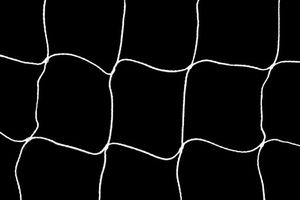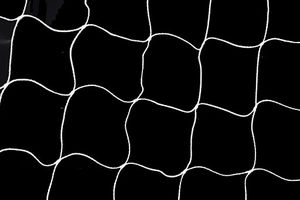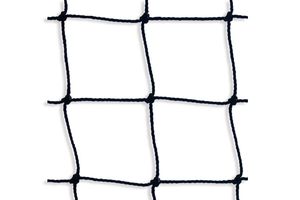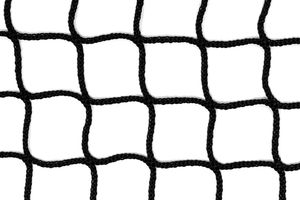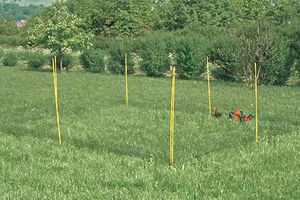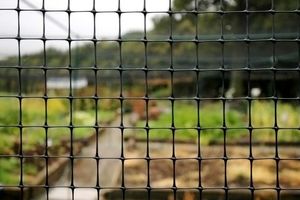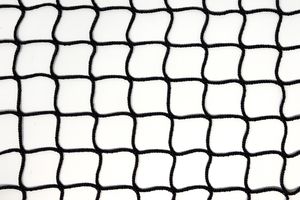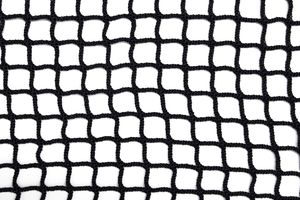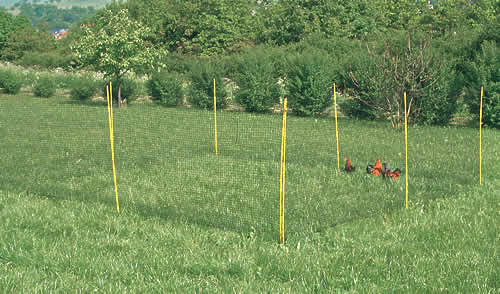Is Bird Netting Safe? Important Information Before Installation
Are you wondering is bird netting safe to use as a method of bird control? The short answer is yes, it is, so long as it is installed correctly and maintained properly.
There's a lot of information available on both sides of the fence, but professionally-installed, high-quality bird netting can be perfectly safe for birds and other wildlife.
The danger is when the netting is not installed properly, or when it becomes damaged and loses its effectiveness.
If you’re weighing up your bird control options, anti-bird netting is a cost-effective choice (particularly when you choose Huck’s bird nets), and it’s very versatile for buildings, gardens, roofs, and many more uses — both commercially and domestically.
Buy Safe Bird Control Nets Online
To help you decide whether bird netting is the right option for you, we've put together this guide with everything you need to know about bird netting safety.
In this guide:
Is It Legal to Prevent Birds Nesting With Bird Netting?
Under UK law, it is legal to use bird netting to prevent birds from nesting on buildings or in specific areas, provided it is done responsibly and does not harm the birds.
The Wildlife and Countryside Act 1981 protects all wild birds, their nests, and eggs. This means it is illegal to damage or destroy an active nest or prevent access to it during the breeding season.
To stay within the law, bird netting must be installed before nesting season begins and regularly maintained to ensure birds do not become trapped. Using bird netting as a preventative measure can be effective, but it must not cause any distress or danger to wildlife.
What Should You Do If You See a Bird Trapped in Netting?
If you see a bird trapped in netting, the first step is to assess the situation carefully. Observe the bird from a safe distance to determine if it can free itself or if intervention is necessary.
If it is safe to do so and you feel confident, you can gently free the bird by carefully cutting the netting using scissors, ensuring not to harm the bird in the process. Always wear PPE gloves to protect yourself and to minimise stress to the bird.
If you are unable to help the bird or if the situation seems too risky, it's important to call a wildlife rescue organisation like the RSPCA or a local animal rescue group. Provide them with as much detail as possible about the location and the bird's condition so they can respond promptly.
Try not to leave the bird unattended once you have identified the issue, as it might be vulnerable to predators or worsening injuries.
Finally, report the faulty or dangerous netting to the property owner or relevant authority to prevent further incidents.
Does Bird Netting Pose a Threat to Other Wildlife?
Bird netting can pose a threat to other wildlife if it's not installed or maintained properly.
While bird netting is designed to protect crops, buildings, or other areas from birds, it can inadvertently trap non-target animals, such as small mammals, reptiles, and other birds.
Loose or discarded netting left in natural habitats can contribute to environmental hazards, further endangering wildlife, so proper disposal is key when replacing your old netting.
To minimise these risks, it is essential to use high-quality netting, install it correctly, and regularly inspect and maintain it to ensure it remains safe and effective.
View our most popular bird netting options, which provide safe and humane protection for your property when professionally installed…
How to Safely Install Bird Netting
The safety of bird netting for wildlife hinges on proper installation. To give you an idea of the correct bird netting installation process, we've put together a step-by-step guide to safely install your bird netting.
By following these steps, you can safely and efficiently install bird netting, protecting your property while minimising harm to wildlife.
Professional Bird Netting Installation Services
Bird netting should never be installed by someone without the proper knowledge, training, or experience, especially on property at height.
We offer professional installation of bird netting, ensuring your property remains protected while prioritising the safety of local wildlife.
With our installation team’s wealth of expertise, experience, and training, we provide customised solutions to suit your specific needs, using high-quality materials and proven techniques.
If you’re interested in this service, please get in touch.
Contact Us About Bird Netting Installation
Step 1: Choose the Right Mesh Size
Selecting the appropriate mesh size is vital to keep the birds you wish to deter from entering the area.
Smaller mesh sizes (such as 19mm) are suitable for smaller birds like sparrows.
Whereas larger birds like pigeons or seagulls require larger meshes. The correct size ensures the effectiveness of the netting while reducing the risk of entanglement.
Step 2: Measure the Area
Carefully measure the area where you need to install the netting. Ensure accurate measurements to avoid having too little or too much material, as either scenario can impact the integrity and effectiveness of the netting.
Step 3: Prepare the Fixings & Tools
Gather all required fixings and tools beforehand. Commonly used fixings include:
- Hooks
- Cables
- Tensioning devices
A hammer, ladder, and cable ties may also be required for tailored adjustments. Ensure these materials are weather-resistant to prolong their durability.
Step 4: Install Framework or Support Wires
Begin by setting up a sturdy framework or tensioned support wires around the perimeter of the area. This structure is critical to keeping the netting taut and effective. For large spaces, cross-support cables can be added for extra stability.
Step 5: Attach the Netting
Drape the bird netting over the area, ensuring it covers all exposed openings. Start by securing one side of the netting to the framework using hooks or cable ties. Gradually secure the remaining sides, checking that the netting is evenly stretched and not sagging.
Step 6: Tension the Netting
To prevent sagging or entanglement risks, ensure the netting is taut. Use turnbuckles or other tensioning devices to tighten support wires if necessary. The netting should be firm and secure without excessive slack, minimising the chances of birds getting caught or pushing through.
Step 7: Secure All Edges
Pay close attention to the edges and corners to prevent gaps where birds could gain entry. Double-check all fixings, and use additional cable ties or clips to close any weak points.
Step 8: Inspect & Maintain
Regularly inspect the netting for wear, damage, or sagging. Promptly repair any holes or weak areas to maintain its effectiveness and ensure the safety of wildlife. Periodic maintenance helps to extend the lifespan and reliability of the installation.
Bird Netting Maintenance & Repair Tips
Maintaining bird netting is important to keep it effective and safe for both your property and local wildlife.
Regularly check the netting to ensure it’s tight and securely attached. Weather and other factors can cause it to sag or loosen, creating gaps where birds might get stuck or enter protected spaces.
Look for tears or damage in the netting, as these can also pose risks to birds. Repair small issues quickly, and replace damaged sections if needed.
Make sure to clean the netting regularly to remove debris like leaves and dirt, which can affect how well it works.
By keeping up with maintenance, you’ll extend the life of your bird netting and help protect birds from harm.
Shop Long-Lasting Bird Netting from Huck
What Mesh Size is Suitable for Which Bird Species?
One of the most crucial aspects of ensuring your bird netting is safe is to choose the correct mesh size for the species you're contending with.
Here's a breakdown of the appropriate mesh sizes for different common bird species in the UK:
| Bird Species | Mesh Size (mm) |
|---|---|
| Seagull Netting | 75-100 |
| Pigeon Netting | 50 |
| Starling Netting | 28-30 |
| Blackbird Netting | 19-20 |
| Sparrow Netting | 19-20 |
| Poultry Netting | 20-75 |
Seagull Netting Mesh Size
Seagulls are large birds, and the recommended mesh size for seagull netting is 75mm to 100mm. This size is sufficient to prevent these birds from passing through while ensuring the netting remains durable and effective over time.
Properly installed seagull netting with the correct mesh size is essential for protecting buildings, roofs, and other structures from damage and contamination caused by these birds.
Pigeon Netting Mesh Size
Pigeons are smaller in size compared to seagulls, so the recommended mesh size for pigeon netting is 50mm.
This mesh size is perfectly suited to prevent pigeons from entering protected areas, such as under solar panels, while maintaining the strength and effectiveness of the netting.
Explore Our Pigeon Netting Range
Starling Netting Mesh Size
When protecting against starlings, it is important to choose netting with the correct mesh size to ensure both effectiveness and safety.
For starlings, a mesh size of 28-30mm is ideal. This size is small enough to prevent starlings from passing through the net while avoiding the risk of entanglement.
Blackbird Netting Mesh Size
When using bird netting to protect against blackbirds, it is important to select a mesh size of 19-20mm.
This size is specifically designed to prevent blackbirds from gaining access to your property while still allowing air and light to pass through.
Sparrow Netting Mesh Size
When using bird netting to deter sparrows, it is essential to choose a mesh size of 19-20mm.
This size is small enough to block sparrows from entering your property while still ensuring that the netting remains breathable and doesn't visually distract from your building.
Explore More Sparrow Netting Options
Poultry Netting Mesh Size
When it comes to poultry netting, the mesh size can vary widely depending on the specific breed of poultry being housed.
For smaller breeds or young chicks, a smaller mesh size of around 20mm is recommended to ensure their safety and prevent them from escaping.
For larger breeds, a mesh size of up to 75mm can be used, as it provides adequate protection while allowing for ample ventilation and visibility.
Selecting the appropriate mesh size is crucial to maintain the balance between security and practicality for your poultry enclosure.
If you're trying to protect against multiple species of birds, we recommend choosing netting with a mesh size that protects against the smallest birds to avoid incidents of smaller birds getting trapped in larger mesh sizes.
Protect Your Property & Keep Birds Safe With Bird Netting From Huck Nets
At Huck Nets, we stock a wide range of bird netting solutions designed to protect your property while ensuring the safety of birds. Our netting is available in various sizes and materials to suit different requirements, whether you're safeguarding buildings, agricultural areas, or other open spaces.
We also offer bespoke bird netting options tailored to the specific needs of your site. This ensures a secure and reliable installation, no matter the complexity of the structure or environment.
Browse our selection of bird netting online today or contact us to get expert advice on how to best protect your building from birds.
Shop Our Professional-Quality Bird Netting Range
FAQs
Is Bird Netting Illegal?
No, bird netting is not illegal. It is a humane and legal method of bird control when installed correctly, ensuring it does not harm the birds while effectively preventing them from accessing protected areas.
What Can You Use Instead of Bird Netting?
If you don’t want to use bird netting for roofs, consider using bird spikes, visual deterrents, or ultrasonic repellents as alternatives to bird netting. These options can effectively discourage birds without physical barriers, ensuring humane bird control while protecting specific areas from potential damage or nesting.
Check out our full range of bird deterrents for more options.
Can You Cut Bird Netting?
Yes, bird netting can be cut to fit specific areas. Use scissors or a utility knife to trim it to the desired size and shape, ensuring the edges are secure to prevent unravelling and maintain its effectiveness.
Alternatively, order bespoke bird netting that fits your requirements to avoid unnecessary trimming.
Can You Use Bird Netting for the Garden?
Yes, bird control netting is perfect for gardens to protect fruits, vegetables, and plants from birds. It is lightweight, easy to install, and ensures crops are shielded from damage while still allowing sunlight and water through.

